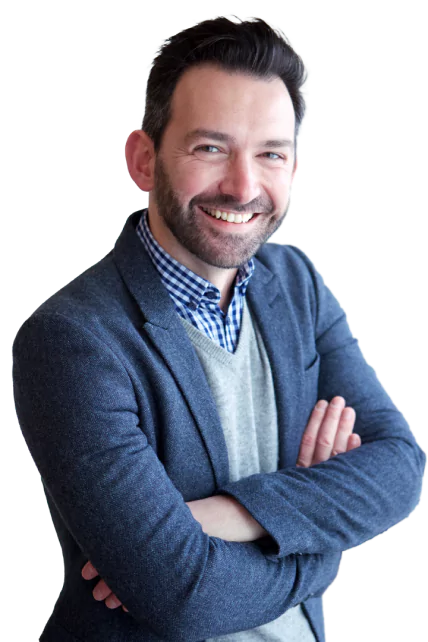Demystifying TOGAF Courses: FAQs
When considering enrolling in a TOGAF training course, understanding inclusions in the course fees and who should attend is essential. TOGAF is a globally recognised framework for enterprise architecture, and taking a course can be a worthwhile investment in your career and skill set. We dive into what you can expect in terms of course inclusions and the diverse audience that can benefit from TOGAF training.
What's included in the TOGAF course fees?
TOGAF courses typically come with offerings designed to provide a comprehensive learning experience. Here's a breakdown of what you can expect:
Exam Vouchers: TOGAF courses include the relevant TOGAF exam vouchers. TOGAF certifications are a valuable credential for enterprise architects and IT professionals.
Digital, Accredited Training Courseware: Participants receive digital course materials accredited by The Open Group. These materials serve as a reference throughout the training and can be invaluable for exam preparation.
Qualified, Experienced Instructor: TOGAF courses are led by qualified instructors with extensive industry experience. These instructors guide you through the complexities of the TOGAF framework, share practical insights, prepare you for your exams, and facilitate a deeper understanding of the subject matter.
Premium Learning Space: In the case of classroom-based TOGAF training, participants benefit from a premium learning environment. This includes a well-equipped training facility conducive to effective learning.
Who should attend a TOGAF course?
TOGAF is a versatile framework that can benefit a wide range of professionals in Australia involved in various aspects of architecture, business transformations, and capability improvements. Here are the key individuals who should consider attending a TOGAF course:
Business, Enterprise, Solution, and IT Architects: TOGAF provides architecture professionals with a structured methodology to design and implement effective enterprise architectures. It equips architects with the tools and knowledge to align technology solutions with business goals.
Business and Systems Analysts: Professionals in this role can gain valuable insights into how enterprise architecture influences business processes and systems. TOGAF training helps analysts understand the broader architectural context in which they operate.
Business Executives and Managers: Business leaders benefit from TOGAF by gaining a holistic view of their organisation's architecture, understanding basic concepts to inform strategic decisions and facilitate effective resource allocation.
Programme, Project, and Change Managers: TOGAF offers valuable guidance on managing architecture-related projects. Project and change managers can use TOGAF principles to ensure successful project outcomes that align with the organisation's architecture.
IT Consultants: Consultants looking to provide architecture-related services to organisations can enhance their expertise with TOGAF certification. It demonstrates a commitment to industry best practices and can make consultants more attractive to clients.
How many domains are there in TOGAF?
The TOGAF framework is typically structured into four domains, each focusing on a different aspect of enterprise architecture:
Business Architecture: This domain focuses on defining the organisation's business strategy, goals, and processes.
Application Architecture: It deals with designing individual applications and their interactions to support the business.
Data Architecture: This domain is concerned with the organisation's data assets, including databases, data models, and data flows.
Technology Architecture: Technology architecture covers the hardware, software, and network infrastructure that supports the organisation's applications and data.
Each domain contributes to creating a holistic enterprise architecture that aligns with an organisation's strategic objectives. By addressing these four domains, TOGAF helps organisations optimise their architecture to meet business needs effectively.
What are the benefits of a TOGAF course with Lumify Work?
Booking and sitting a TOGAF course can be a valuable investment for professionals seeking to enhance their knowledge and skills in enterprise architecture. The course fees cover essential components such as exam vouchers, accredited courseware, experienced instructors, premium learning spaces, and meals for classroom-based training.
For TOGAF certification training, students can book and sit TOGAF EA Foundation and Practitioner course. Lumify Work can deliver our courses at one of our campuses, remotely via state-of-the-art telepresence technology, or at your premises.
For those who completed the TOGAF Standard, Version 9 certification, there is the TOGAF EA Practitioner Bridge that prepares you to upgrade your certification to the TOGAF Enterprise Architecture Practitioner certification. This upgrade provides you with a comprehensive understanding of modern architecture, as included in the latest release of the TOGAF Standard, 10th Edition - equipping you with the necessary skills to guide digital transformation and enhance enterprise agility successfully.
Additionally, TOGAF training courses benefit a diverse range of professionals, including architects, analysts, business executives, managers, project leaders, and IT consultants. TOGAF's four-level approach to enterprise architecture ensures a comprehensive understanding of an organisation's architecture. It is a valuable framework for those looking to excel in enterprise architecture and IT strategy.



